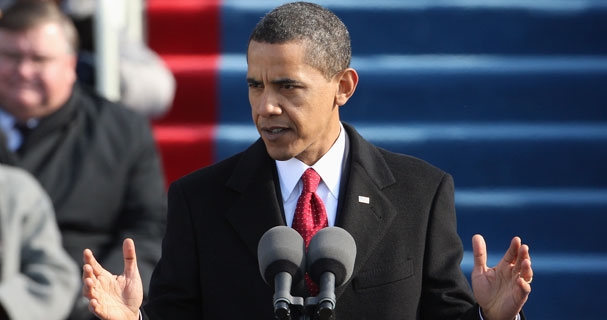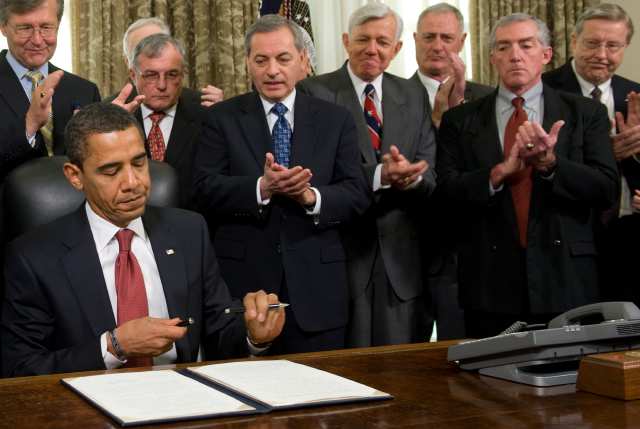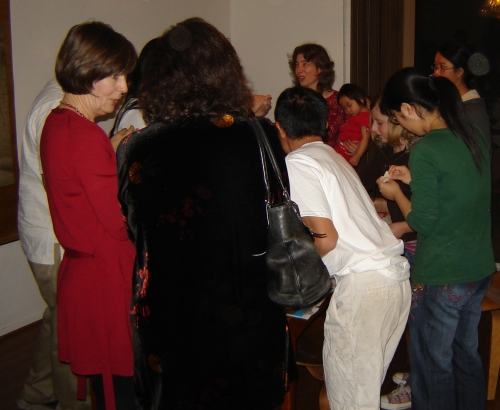
In the last week I reached some sort of tentative completion on two papers. They're not done, but they're done enough to put on the arXiv:
My next job is to finish the final section of the Rosetta Stone paper with Mike Stay. Then I need to finish my history of n-categorical physics with Aaron Lauda. And then my slate will be close to clean! I've been thinking a lot about what I want to do next. Not more of the same. Waking up and not knowing what I have to do — that would be nice.
On Saturday I'll fly to DC to visit my mother and sister. Later I'll visit my friend Bill Schmitt and give two talks at the 2009 Joint Mathematics Meetings in downtown DC. This mega-conference runs from Monday to Thursday. I'm really looking forward to meeting lots of friends there — odd, but the prospect of talking to friends seems vastly more interesting than the mathematics. (Maybe that's normal, but I'm not normal, normally.)
I'll then spend more time with my family, and come home on Saturday the 10th.
Then I'll dive into teaching. This quarter I'm continuing my seminar on Lie theory and also teaching an undergraduate course on the geometry of curves and surfaces, based on Thorpe's book Elementary Topics in Differential Geometry. I've never taught a course like this, and I've always been skeptical of doing differential geometry without the modern notion of manifold. But now it seems charming, in a "retro" kind of way.
(Once upon a time manifolds were just higher-dimensional surfaces embedded in Rn. Now they're defined by gluing together coordinate patches that look like copies of Rn. As Jim Dolan pointed out, both approaches are clunky, but in dual ways: we start with Euclidean space, and then build more general spaces using either equalizers or coequalizers! Why does the modern approach using coequalizers seem more "intrinsic" to most people? I know Alain Connes never liked the modern definition of manifold, building the darn things by stitching together little pieces of Rn. He says this is why he invented noncommutative geometry.)
It's New Year's Day. As always on this day, Lisa is writing a poem. So far I seem to be regurgitating my recent activities and short-term plans. Maybe that's what a diary is good for — not so much to record all this crud, but simply to get it out of my system.
(There's a theory that this is what dreams are for.)
Anyway, moving on... here's a fun essay by the inimitable Nicholson Baker:
And here's an interesting article on antibiotics:
At sublethal concentrations, antibiotics can have profound and unexpected effects on surrounding cells. Several different antibiotics, when present at a small fraction (less than 1 percent) of their lethal concentration, coordinate the expression of whole sets of genes in bacteria that sense the antibiotic. These coordinated responses are not simply the molecular expression of panic (the aptly named "SOS response") expected when an antibiotic is present. The signal may, for instance, induce Pseudomonas aeruginosa bacteria to develop into a bacterial biofilm — an architecturally complex, surface-bound conglomeration of cells — which, regrettably, makes bacteria much less sensitive to antibiotics in clinical settings. In another irony, low concentrations of of antibiotic appear to upregulate the expression of a suite of genes responsible for increased virulence, in effect transforming a benign bacterium into a pathogen.Some other curious bio-news: there's a kind of sea slug that can take the chloroplasts from the algae it eats and use them to do its own photosynthesis. Even weirder, the sea slug also takes genes from the algae — genes that produce proteins required for photosynthesis — and incorporates these genes in its own DNA! Even cooler, these genes are found in the sea slugs' sex cells, so it can pass on these genes to its descendants:
The plan is for me to spend a day at my mom's house and then
go into DC on Monday for the Joint Mathematics Meetings —
a big annual math conference combining the MAA, the AMS and
other organizations. While there, I'll stay with my friend
Bill Schmitt. Then on Friday I'll come back home and spend some
time with my mom and sister.
January 9, 2009
Today I took the Metro from DC to my sister's apartment,
and she drove us to my mother's house. It was
great seeing her; we talked a lot and looked at old family
photos. But the task of the day — which didn't take
very long at all — was to sprinkle my
father's ashes on our yard, as he had requested.
My mom originally thought they should be sprinkled in the back yard, but I suggested that the area near the old woodpile would be better, since that's where he spent the most time, chopping wood for the cast iron stove.
The ashes were in a cardboard box: no urn, he hadn't wanted that. My mom and sister seemed reluctant to open it, so I decided to take charge. I opened it up. Inside there was a plastic bag held closed a plastic tie that was hard to cut. Eventually I succeeded, and then we took the bag outside.
Nothing marked the site of the old woodpile. No logs anymore: my parents had stopped using that stove to heat the house when my dad got too weak to chop logs. We had to guess where the old place was.
Suddenly my mom asked me or my sister to say some words. We hadn't planned for this, and neither of us were quite ready to improvise a speech or sermon. My sister didn't want to say anything. I said something about how my father had never wanted any ceremony to mark his death, and that these ashes were not really my father in any true sense, just the remains of his body. Not very inspirational or eloquent.
I sprinkled the ashes around, finding to my slight horror that instead of a fine powder, as I'd imagined, they contained lumps of stuff and things that looked like small rubber bands. I didn't dare examine them closely.
My mom cried and I hugged her. We walked back into the house.
I looked down and noticed that my shoes were covered with ashes.
January 14, 2009
A correspondent told me some fascinating things about
the youth orchestra program in Venezuela called
El Sistema:
It's a massive social project in Venezuela that rescues children from extreme abject poverty by giving them instruments and music lessons and getting them to play in orchestras. It's extraordinarily successful. I believe there are currently 100,000 children in the system ("Sistemas"). It started about thirty years ago when Venezuela only had two professional orchestras, and now there are 30 professional orchestras and 200 youth orchestras, and the national one is the Simón Bolivar orchestra. It's now one of the greatest orchestras in the world, and the children who've been trained through it have gone to professional jobs in the greatest orchestras in the world, including Gustavo Dudamel, who's been appointed conductor in LA.However, they're now trying to emulate the Venezuelan program in Scotland.The children come from the slums and aren't allowed to take their instruments home because of mugging. Some of them come from drug centres, have criminal records etc. Every successive government has poured money into this project because it's so successful. I am rather sceptical about such a thing working in the UK though. Living in the north has opened my eyes to some hidden class issues in the UK. I think people assume that the "upper classes" (whatever they are) are maintaining the supposed "class system" here, and oppressing the "lower classes". But there's another issue which is the proud working classes e.g. of the North. I had never heard anyone describe themselves as any class at all until I came here, and all over the place there are people who declare themselves to be proud working class people. They don't want to be any other class. They don't want to do anything that they perceive as being for "posh people". They don't want to go to university if they perceive it as being for posh people. And if you gave their children instruments and put them in an orchestra, I fear they would say "Oh no, music like that isn't for us working class people, it's for the posh people!"
Maybe it's because we don't have the sort of extreme abject poverty that is found in the slums of Venezuela. Apparently the children are prone to headaches because their families don't have any food. I compare this with the English beggar to whom I gave a loaf of bread. He said "Oh no, I don't eat bread!" to which I rather astonishedly replied "You don't eat bread???" to which he replied "Well, not without anything on it!"
For a short time, the telephone was little more than a novelty. For ten cents you could see it demonstrated by Bell himself, in a church, along with singing and recitations by local talent. From some distance away, Bell would receive a call from "the invisible Tom Watson". Then the telephone became a plaything of the rich. A Boston banker paid for a private line between his office and his house so that he could let his family know exactly when he would be home for dinner. Mark Twain was among the first Americans to own a telephone, but he wasn't completely taken with the device. "The human voice carries entirely too far as it is," he remarked.By 1889, the New York Times was reporting a "War on Telephone Poles". Wherever telephone companies erected poles, homeowners and business owners were sawing them down, or defending their sidewalks with rifles. Property owners in Red Bank, New Jersey, threatened to tar and feather the workers putting up telephone poles. A judge found that a man who had cut down a pole because it was "obnoxious" was not guilty of malicious mischief. Telephone poles, newspaper editorials complained, were an urban blight. The poles carried a wire for each telephone — sometimes hundreds of wires. There were also telegraph wires, power lines, and trolley cables. The sky was netted with wires.
The War on Telephone Poles was fueled, in part, by the American concern for private property and the reluctance to surrender it to a shared utility. And then there was a fierce regard for aesthetics, an obsession with purity, a dislike for the way the poles and wires marred a landscape that other new inventions — skyscrapers and barbed wire — were just beginning to complicate. There was also a fear that distance, as it had always been known and measured, was collapsing.
The city council in Sioux Falls, South Dakota, ordered policemen to cut down all the telephone poles in town. And the mayor of Oshkosh, Wisconsin, ordered the police chief and the fire department to chop down the telephone poles there. Only one pole was chopped down before the telephone men climbed all the poles along the line, preventing any more chopping. Bell Telephone Company stationed a man at the top of each pole as soon as it had been set, until enough poles had been set to string a wire between them, at which point it became a misdemeanor to interfere with the poles. Even so, a constable cut down two poles holding forty or fifty wires. And the owner of a cannery ordered his workers to throw dirt back into the hole the telephone company was digging in front of his building. His men threw the dirt back in as fast as the telephone workers could dig it out. Then he sent out a team to dump a load of stones into the hole. Eventually the pole was erected on the other side of the street.
Despite the War on Telephone Poles, it would take only four years after Bell's first public demonstration of the telephone for every town of more than 10,000 people to be wired, although many towns were wired only to themselves. By 1900, telephones outnumbered bathtubs in America.
I woke up at 8:30, turned on the TV, and watched the inauguration. Then I put on my President Obama T-shirt and went to work.
The mood at the inauguration was electric, thanks to the enormous crowd and the months, even years of anticipation — topped off by the huge concert in front of the Lincoln Memorial the day before yesterday, and the Martin Luther King celebrations yesterday.

Obama's speech was, as usual, carefully crafted to the mood of the moment: not triumphant or soaring, but bracing. It began by painting a bleak picture of the mess we've gotten ourselves into:
That we are in the midst of crisis is now well understood. Our nation is at war, against a far-reaching network of violence and hatred. Our economy is badly weakened, a consequence of greed and irresponsibility on the part of some, but also our collective failure to make hard choices and prepare the nation for a new age. Homes have been lost; jobs shed; businesses shuttered. Our health care is too costly; our schools fail too many; and each day brings further evidence that the ways we use energy strengthen our adversaries and threaten our planet.Then came a powerful attempt to make us come to our senses before it's too late:These are the indicators of crisis, subject to data and statistics. Less measurable but no less profound is a sapping of confidence across our land — a nagging fear that America's decline is inevitable, and that the next generation must lower its sights.
On this day, we come to proclaim an end to the petty grievances and false promises, the recriminations and worn out dogmas, that for far too long have strangled our politics."Set aside childish things" — that hit with the force of bucket of cold water. Since when has a president told us in his first moment of office that we are behaving childishly?We remain a young nation, but in the words of Scripture, the time has come to set aside childish things. The time has come to reaffirm our enduring spirit; to choose our better history; to carry forward that precious gift, that noble idea, passed on from generation to generation: the God-given promise that all are equal, all are free and all deserve a chance to pursue their full measure of happiness.
And consider this:
What the cynics fail to understand is that the ground has shifted beneath them — that the stale political arguments that have consumed us for so long no longer apply.This is the sort of thing one tries to make true by saying it is true. Obama is trying mightily to make it true, and while he didn't seek office knowing he would preside over an economic crisis, he is smart enough to take advantage of this as a window of opportunity for drastic change. We'll see how it goes.
People outside the United States — citizens of older, wiser, more cynical countries — may underestimate how Americans, even pessimists like me, can be fired up by patriotic words, biblical allusions and a rousing call to action. I can't imagine this speech working in England, for example. But Americans still clutch to a dream of greatness, a dream they feel slipping away.
Here are the words that predominated Obama's speech, courtesy of Kate Day at the Telegraph, made using worlde.net:

Recall that earlier generations faced down fascism and communism not just with missiles and tanks, but with sturdy alliances and enduring convictions.and, even more telling:
Those who cling to power through corruption and deceit and the silencing of dissent, know that you are on the wrong side of history.

Executive Order regarding InterrogationExecutive Order revokes Executive Order 13440 that interpreted Common Article 3 of the Geneva Conventions. It requires that all interrogations of detainees in armed conflict, by any government agency, follow the Army Field Manual interrogation guidelines. The Order also prohibits reliance on any Department of Justice or other legal advice concerning interrogation that was issued between September 11, 2001 and January 20, 2009.
The Order requires all departments and agencies to provide the ICRC access to detainees in a manner consistent with Department of Defense regulations and practice. It also orders the CIA to close all existing detention facilities and prohibits it from operating detention facilities in the future.
Finally, the Order creates a Special Task Force with two missions. The Task Force will conduct a review of the Army Field Manual interrogation guidelines to determine whether different or additional guidance is necessary for the CIA. It will also look at rendition and other policies for transferring individuals to third countries to be sure that our policies and practices comply with all obligations and are sufficient to ensure that individuals do not face torture and cruel treatment if transferred. This Task Force will be led by the Attorney General with the Secretary of Defense and the Director of National Intelligence as co-Vice Chairs.
Executive Order regarding Guantanamo Bay detaineesSo, the vile art of tying people down and pouring water into their lungs until they confess whatever you want, developed by the Spanish Inquisition and practiced here in America by Bush's henchmen, is no longer allowed.Executive Order requires closure of the Guantanamo detention center no later than one year from the date of the Order. Closure of the facility is the ultimate goal but not the first step. The Order establishes a review process with the goal of disposing of the detainees before closing the facility.
The Order sets up an immediate review to determine whether it is possible to transfer detainees to third countries, consistent with national security. If transfer is not approved, a second review will determine whether prosecution is possible and in what forum. The preference is for prosecution in Article III courts or under the Uniform Code of Military Justice (UCMJ), but military commissions, perhaps with revised authorities, would remain an option. If there are detainees who cannot be transferred or prosecuted, the review will examine the lawful options for dealing with them. The Attorney General will coordinate the review and the Secretaries of Defense, State, and Homeland Security as well as the DNI and the Chairman of the Joint Chiefs of Staff will participate.
The Executive Order directs the Secretary of State to seek international cooperation aimed at achieving the transfers of detainees.
The Order directs the Secretary of Defense to halt military commission proceedings pending the results of the review.
Finally, the Executive Order requires that conditions of confinement at Guantanamo, until its closure, comply with Common Article 3 of the Geneva Conventions and all other applicable laws.
Obama also barred his aides from lobbying any executive agency for the duration of his administration, putting an end to the revolving door practices of the Bush administration, which blurred the line between regulators and the industries they regulate.
And Obama issued three
orders to make government more transparent. For example, he
revoked executive order 13233,
a rule instituted by Bush that allowed former presidents, vice
presidents (guess who?) and their heirs to
block the release of documents after they have left office.
January 23, 2009
I got invited by Physics
World to write a feature article on
the history of the Earth — they liked my discussion of that
in week273.
I think I'll try it.
January 24, 2009
Saul
Griffith is a Californian inventor who received a MacArthur "genius"
award in 2007. Here is Stewart
Brand's summary of a talk by Griffith at the Long Now Seminar.
The talk was called 'Climate Change Recalculated'.
Engineer Griffith said he was going to make the connection between personal actions and global climate change. To do that he's been analyzing his own life in extreme detail to figure out exactly how much energy he uses and what changes might reduce the load. In 2007, when he started, he was consuming about 18,000 watts, like most Americans.Over at the n-Category Café there was some discussion of how Griffith arrived at such a large area as "the size of Australia". I asked Brand and he said:The energy budget of the average person in the world is about 2,200 watts. Some 90 percent of the carbon dioxide overload in the atmosphere was put there by the US, USSR (of old), China, Germany, Japan, and Britain. The rich countries have the most work to do.
What would it take to level off the carbon dioxide in the atmosphere at 450 parts per million (ppm)? That level supposedly would keep global warming just barely manageable at an increase of 2 degrees Celsius. There still would be massive loss of species, 100 million climate refugees, and other major stresses. The carbon dioxide level right now is 385 ppm, rising fast. Before industrialization it was 296 ppm. America's leading climatologist, James Hanson, says we must lower the carbon dioxide level to 350 ppm if we want to keep the world we evolved in.
The world currently runs on about 16 terawatts (trillion watts) of energy, most of it burning fossil fuels. To level off at 450 ppm of carbon dioxide, we will have to reduce the fossil fuel burning to 3 terawatts and produce all the rest with renewable energy, and we have to do it in 25 years or it's too late. Currently about half a terawatt comes from clean hydropower and one terawatt from clean nuclear. That leaves 11.5 terawatts to generate from new clean sources.
That would mean the following. (Here I'm drawing on notes and extrapolations I've written up previously from discussion with Griffith):
"Two terawatts of photovoltaic would require installing 100 square meters of 15-percent-efficient solar cells every second, second after second, for the next 25 years. (That's about 1,200 square miles of solar cells a year, times 25 equals 30,000 square miles of photovoltaic cells.) Two terawatts of solar thermal? If it's 30 percent efficient all told, we'll need 50 square meters of highly reflective mirrors every second. (Some 600 square miles a year, times 25.) Half a terawatt of biofuels? Something like one Olympic swimming pools of genetically engineered algae, installed every second. (About 15,250 square miles a year, times 25.) Two terawatts of wind? That's a 300-foot-diameter wind turbine every 5 minutes. (Install 105,000 turbines a year in good wind locations, times 25.) Two terawatts of geothermal? Build 3 100-megawatt steam turbines every day — 1,095 a year, times 25. Three terawatts of new nuclear? That's a 3-reactor, 3-gigawatt plant every week — 52 a year, times 25."
In other words, the land area dedicated to renewable energy ("Renewistan") would occupy a space about the size of Australia to keep the carbon dioxide level at 450 ppm. To get to Hanson's goal of 350 ppm of carbon dioxide, fossil fuel burning would have to be cut to ZERO, which means another 3 terawatts would have to come from renewables, expanding the size of Renewistan further by 26 percent.
Meanwhile for individuals, to stay at the world's energy budget at 16 terawatts, while many of the poorest in the world might raise their standard of living to 2,200 watts, everyone now above that level would have to drop down to it. Griffith determined that most of his energy use was coming from air travel, car travel, and the embodied energy of his stuff, along with his diet. Now he drives the speed limit (no one has passed him in six months), seldom flies, eats meat only once a week, bikes a lot, and buys almost nothing. He's healthier, eats better, has more time with his family, and the stuff he has he cherishes.
Can the world actually build Renewistan? Griffith said it's not like the Manhattan Project, it's like the whole of World War II, only with all the antagonists on the same side this time. It's damn near impossible, but it is necessary. And the world has to decide to do it.
Griffith's audience was strangely exhilarated by the prospect.
—Stewart Brand
The Australia line came from Saul, in relation to an earlier version, where 2 terawatts of power was to come from algae instead of half a terawatt. Also I gave the wind only in terms of turbines; they take up formidable acreage.An interview with James Lovelock gives another slant on these issues:
Here are a few selected quotes. He seems to agree with the idea, noted above, that wind power requires vast amounts of area. He's less optimistic about our ability to build 'Renewistan':
Question: Your work on atmospheric chlorofluorocarbons led eventually to a global CFC ban that saved us from ozone-layer depletion. Do we have time to do a similar thing with carbon emissions to save ourselves from climate change?Read the rest to find out why he's an 'optimistic' pessimist. I think it's related to how Saul Griffith's audience was "strangely exhilarated" — as Lovelock says, "We're much better equipped to deal with [this] kind of thing than long periods of peace."Answer: Not a hope in hell. Most of the "green" stuff is verging on a gigantic scam. Carbon trading, with its huge government subsidies, is just what finance and industry wanted. It's not going to do a damn thing about climate change, but it'll make a lot of money for a lot of people and postpone the moment of reckoning. I am not against renewable energy, but to spoil all the decent countryside in the UK with wind farms is driving me mad. It's absolutely unnecessary, and it takes 2500 square kilometres to produce a gigawatt - that's an awful lot of countryside.
Question: So are we doomed?
Answer: There is one way we could save ourselves and that is through the massive burial of charcoal. It would mean farmers turning all their agricultural waste — which contains carbon that the plants have spent the summer sequestering — into non-biodegradable charcoal, and burying it in the soil. Then you can start shifting really hefty quantities of carbon out of the system and pull the CO2 down quite fast.
Question: Would it make enough of a difference?
Answer: Yes. The biosphere pumps out 550 gigatonnes of carbon yearly; we put in only 30 gigatonnes. Ninety-nine per cent of the carbon that is fixed by plants is released back into the atmosphere within a year or so by consumers like bacteria, nematodes and worms. What we can do is cheat those consumers by getting farmers to burn their crop waste at very low oxygen levels to turn it into charcoal, which the farmer then ploughs into the field. A little CO2 is released but the bulk of it gets converted to carbon. You get a few per cent of biofuel as a by-product of the combustion process, which the farmer can sell. This scheme would need no subsidy: the farmer would make a profit. This is the one thing we can do that will make a difference, but I bet they won't do it.
Question: Do you think we will survive?
Answer: I'm an optimistic pessimist. I think it's wrong to assume we'll survive 2 °°C of warming: there are already too many people on Earth. At 4 °C we could not survive with even one-tenth of our current population. The reason is we would not find enough food, unless we synthesised it. Because of this, the cull during this century is going to be huge, up to 90 per cent. The number of people remaining at the end of the century will probably be a billion or less. It has happened before: between the ice ages there were bottlenecks when there were only 2000 people left. It's happening again.
I don't think humans react fast enough or are clever enough to handle what's coming up. Kyoto was 11 years ago. Virtually nothing's been done except endless talk and meetings.
Since such a machine could build any other machine, it could also build itself. So, it would be a self-replicating machine. Von Neumann imagined building such machines in the real world and letting them spread throughout the universe. NASA actually tried to design such a machine in 1980. But it seems they never worked out all the details.
My friend Bruce Smith just pointed me to this interesting website:
You may have heard of 3d printers. A 3d printer can build three-dimensional objects of any desired shape by laying down successive cross sections of plastic. People use them for rapid prototyping: that is, quickly building rough models of various products.

It would be nice to have a 3d printer that could print out a copy of itself. And that's the idea of the RepRap — short for "replicating rapid prototyper". It doesn't completely build itself yet, but it can make 60% of its own parts out of 500 euros worth of raw materials. The rest of the parts are supposed to be fairly cheap. Some hand assembly is required.
The RepRap doesn't just make copies of itself.
It can also make
flyswatters, coat hooks, children's
shoes and many other things.
January 26, 2009
Above I compared Obama's words to "a bucket of cold water",
and his actions to "rousing us from a long nightmare". It turns
out I'm not the only one reaching for such metaphors.
On December 21, 2007 I described how Stephen Johnson — Bush's head of the Environmental Protection Agency — had been trying to stop California and other states from boosting fuel efficiency. They wanted to do it to fight global warming. They needed a waiver from the EPA to do it. Johnson, acting against the recommendations of his staff, refused to even hear their case. Four labor unions representing most of the EPA's professional staff published an open letter to Johnson, complaining that he had ignored the EPA's official Principles of Scientific Integrity.
Here's some news on that from the Riverside Press Enterprise:
Last year, Obama co-sponsored a bill with Democratic Sen. Barbara Boxer of California to approve the waiver."If confirmed, I will immediately revisit the waiver," Lisa Jackson, Obama's choice to head the Environmental Protection Agency, told Boxer at her confirmation hearing last week.
Boxer, head of the Senate Environment and Public Works Committee, is expecting quick approval. She compared the EPA under Bush's leadership to Sleeping Beauty, saying that the agency now "needs to be awakened from a deep and nightmarish sleep."




The big crowds showed up around 7. Lisa boiled batch after batch of jiaozi for hours afterward, talking to people in the kitchen. I roamed about doing random chores, and kept coming back to the kitchen to make bowls of dipping sauce: 4 tablespoons light soy sauce, 4 tablespoons rice wine vinegar, 2 tablespoons sesame seed oil. The party ended around 11:30.
If it does not do justice, what is the government but a great criminal enterprise? - Augustine, City of God
© 2009 John Baez
baez@math.removethis.ucr.andthis.edu